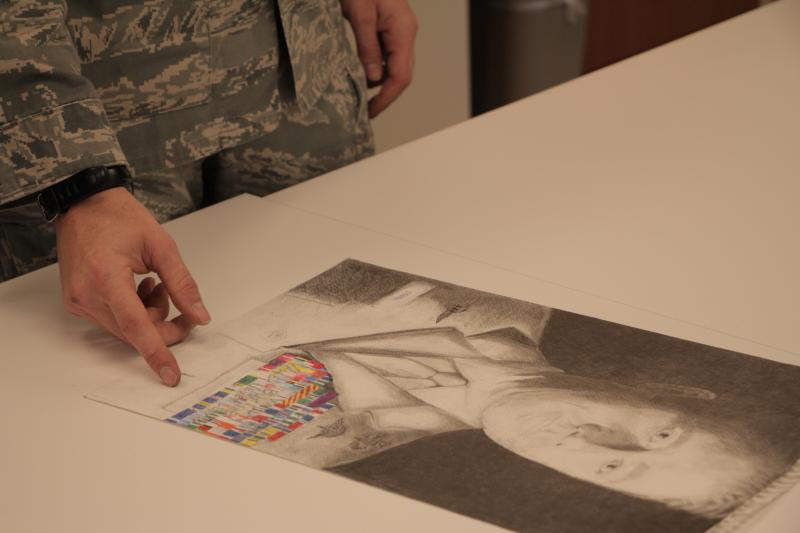2013

A self portrait drawn by Air Force Master Sergeant Earl Covel during visual arts therapy at Fort Belvoir, Virginia. Photo by Sally Gifford
Not every battle wound is evident by scars or bandages, prosthetic limbs or wheelchairs. Of the 2.7 million American veterans of the Iraq and Afghanistan Wars, it’s estimated that up to 20 percent have experienced post-traumatic stress disorder (PTSD), and 19 percent have traumatic brain injury (TBI). Both of these conditions can be utterly debilitating, and are associated with depression, anxiety, and suicide. And yet, nearly half of individuals with PTSD don’t seek treatment, and instead suffer silently and alone.
In 2011, the NEA sought to alleviate this crisis by bringing writing therapy to the National Intrepid Center of Excellence (NICoE), located on the campus of Walter Reed National Military Medical Center in Bethesda, Maryland. The NICoE is a cutting-edge institute dedicated to researching and healing the psychological wounds of combat, and has pioneered the use of holistic, unconventional treatments.
The idea for the writing component grew out of the NEA’s Operation Homecoming initiative, which conducted writing workshops for troops, veterans, and their families from 2004 to 2009. In 2013, the NEA expanded the initiative, which would become known as Creative Forces®: NEA Military Healing Arts Network, and took this program a step further by placing creative arts therapies at the core of patient-centered care at clinical sites, eventually expanding throughout the country, including telehealth services, and increasing access to community arts activities to promote health, well-being and quality of life for military service members, veterans, and their families and caregivers.
“Sometimes patients wind up feeling so overwhelmed that it’s hard to sort through what exactly is overwhelming them and what really is underlying all those emotions,” said Jackie Biggs, an art therapist at Fort Belvoir. “Through creating the artwork and then talking about it later, they’re usually able to identify and pinpoint really what’s underlying what’s going on, and what they can target in therapy moving forward.”

